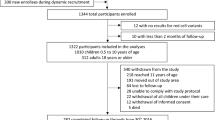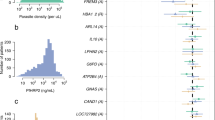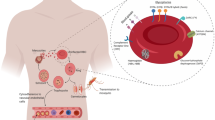Abstract
SEVERAL genetic polymorphisms involving haemoglobin and glucose-6-phosphate dehydrogenase are thought to provide a measure of protection against human malarias1. These are all single gene traits, but quantitative variables within the human red cell may also be of importance. Thus Brewer and Powell2 have demonstrated a strong positive correlation between the level of erythrocyte ATP and the rapidity with which a parasitaemia of 1,000 per mm3 is reached during experimental infections of humans with falciparum malaria. The higher the level of red cell ATP, the more rapidly parasitaemia develops, at least in the early stages of infection. This study was designed to investigate the relationship between red cell ATP level and the development of parasitaemia in a different species infected with a different form of malaria.
Similar content being viewed by others
References
Motulsky, A. G., Human Biol., 32, 28 (1960).
Brewer, C. J., and Powell, R. D., Proc. US Nat. Acad. Sci., 54, 741 (1965).
Brewer, G. J., and Powell, R. D., J. Lab. Clin. Med., 67, 726 (1966).
Brewer, G. J., Biochem. Gen., 1, 25 (1967).
Author information
Authors and Affiliations
Rights and permissions
About this article
Cite this article
EATON, J., BREWER, G. Red Cell ATP and Malaria Infection. Nature 222, 389–390 (1969). https://doi.org/10.1038/222389a0
Received:
Issue Date:
DOI: https://doi.org/10.1038/222389a0
- Springer Nature Limited
This article is cited by
-
Pyruvate kinase in malaria host–parasite interaction
Nature (1975)





